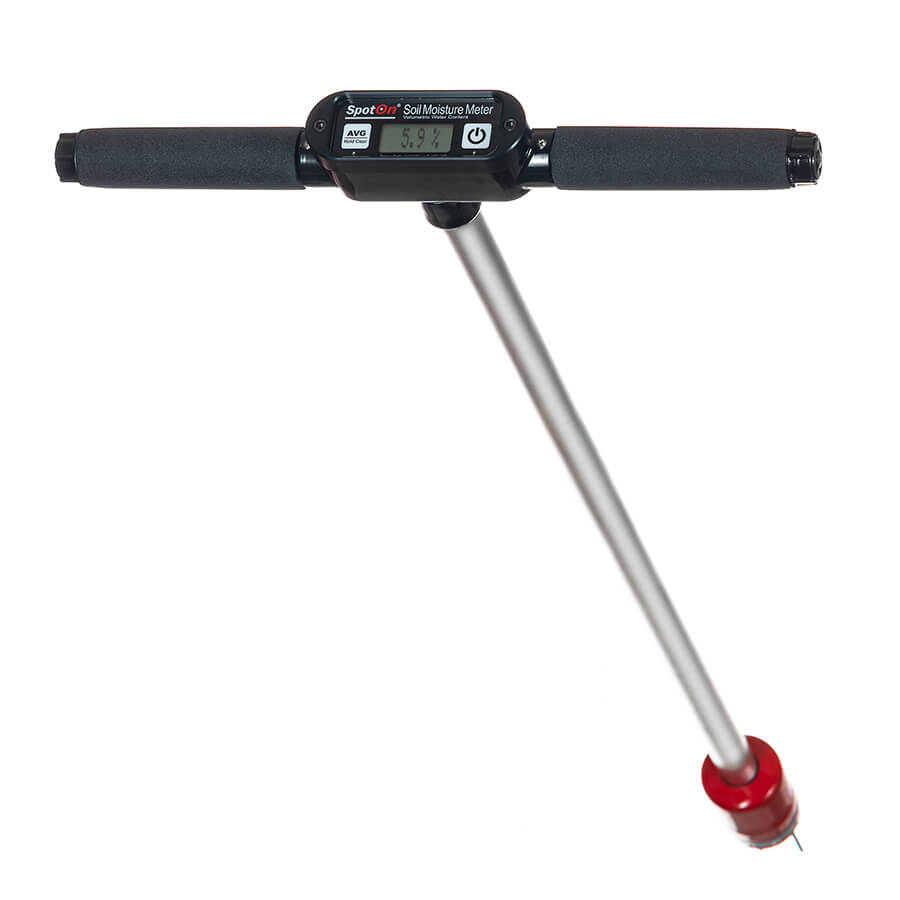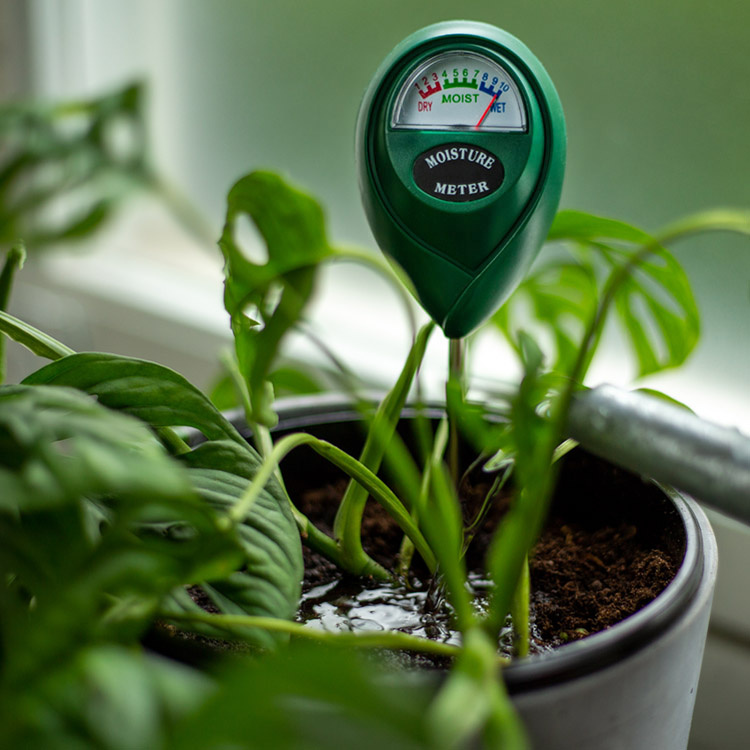Explore the Globe of Wetness Meters: Every Little Thing You Required to Know
In the world of moisture meters exists a world of precision and practicality that usually goes undetected. Comprehending how moisture meters run, the different types offered, and their varied uses can shed light on their significance in making certain high quality and performance.
Just How Dampness Meters Work
Moisture meters run by measuring the electrical conductivity or capacitance of products to figure out the dampness content present - Moisture Meter. These meters are invaluable devices across different industries, consisting of building and construction, farming, and woodworking. By utilizing various approaches such as pinless or pin-type innovation, dampness meters give precise analyses that assist specialists make notified decisions
Pin-type wetness meters work by putting the sharp pins right into the product being checked. On the various other hand, pinless dampness meters make use of electro-magnetic signals to check a bigger area without causing any type of damage to the product's surface area.
Regardless of the approach utilized, wetness meters play an important duty in protecting against issues such as mold development, architectural damage, or item flaws triggered by excess wetness. Understanding exactly how these meters work is crucial for guaranteeing the high quality and integrity of products in different applications.
Kinds Of Dampness Meters
Provided the important role wetness meters play in different markets, it is necessary to comprehend the various kinds available to experts for precisely assessing moisture levels. There are primarily two primary sorts of dampness meters: pin-type and pinless dampness meters.
Pin-type moisture meters make use of two pins that are put into the product being tested to determine the electrical resistance between them. This approach is typically made use of for wood, drywall, and various other building materials. Pin-type meters give accurate analyses at particular midsts, making them ideal for determining dampness gradients.
On the various other hand, pinless dampness meters use electro-magnetic sensing unit plates to scan a bigger location of the material without triggering any kind of damage. This type is ideal for quickly scanning large areas and is frequently used for flooring, wall surfaces, and ceilings. Pinless meters are hassle-free for taking readings on finished surfaces without leaving any kind of noticeable marks.
Both types of moisture meters have their advantages and are picked based upon the specific demands of the task handy. Understanding the differences between these types is critical for professionals to make precise wetness assessments.
Applications Across Industries
With varied capabilities, dampness meters locate widespread application across various industries, helping experts in making certain optimum problems for frameworks and products. In the farming field, dampness meters are important for identifying the moisture content in grains, seeds, and hay, guaranteeing quality assurance and avoiding mold growth. Construction experts rely upon moisture meters to evaluate the moisture levels in structure products like drywall, concrete, and timber, which is vital for preserving structural integrity and stopping problems like rot or mold. The flooring sector makes use of wetness meters to determine the dampness material in subfloors before setting up various floor coverings, protecting against pricey problems because of excess wetness. Additionally, in the food industry, wetness meters are used navigate here to monitor and regulate moisture levels in items such as grains, nuts, and dried out fruits to keep quality and top quality. In addition, wetness meters play a crucial role in the reconstruction and damage assessment sector by assisting experts address and recognize water damages in buildings promptly. Throughout these diverse sectors, wetness meters are crucial devices for guaranteeing the top quality, security, and long life of different materials and items.
Tips for Using Moisture Meters
Utilize the wetness meter's calibration setups to make certain accurate analyses when determining the dampness material in various materials. Furthermore, make sure the meter is set to the proper moisture array for the product you are determining to acquire the most precise results.

When making use of a pin-type dampness meter, put the pins to the ideal deepness suggested for the material being tested. This ensures that the moisture analyses are extracted from the right depth within the material, giving an extra precise representation Discover More of its moisture web content. For pinless wetness meters, keep in mind to maintain correct call with the material's surface area to obtain reputable readings.

On Home Page a regular basis check and replace the batteries in your moisture meter to protect against incorrect analyses because of reduced power. Store the meter in a completely dry and safe area when not in use to lengthen its lifespan and preserve its precision. By complying with these pointers, you can make best use of the performance of your wetness meter and obtain accurate moisture web content measurements across various products.

Upkeep and Calibration
To guarantee the precision of moisture web content measurements, normal maintenance and calibration of the dampness meter are vital action in its appropriate performance. Upkeep involves maintaining the wetness meter free and tidy from particles that could impact its analyses. It is essential to comply with the producer's guidelines for cleaning up to stop damage to the device. Additionally, normal calibration is necessary to verify the accuracy of the analyses. Calibration readjusts the moisture meter to make sure that it provides constant and trusted outcomes.
Calibration ought to be carried out periodically, especially if the wetness meter is used frequently or in crucial applications where precise measurements are required. By adjusting the wetness and preserving meter frequently, users can rely on the precision of the dampness material measurements gotten.
Final Thought
To conclude, wetness meters play a vital function in various industries by properly determining the moisture web content of products. Understanding how these tools function, the various types available, and correct maintenance and calibration are essential for getting trustworthy results. Whether in production, agriculture, or building, making use of wetness meters helps make certain quality assurance and efficiency in procedures.
Construction specialists rely on dampness meters to assess the wetness degrees in building products like drywall, wood, and concrete, which is critical for maintaining architectural integrity and avoiding concerns like rot or mold and mildew. The flooring market makes use of moisture meters to measure the wetness material in subfloors prior to installing different flooring treatments, preventing costly problems due to excess wetness.Make use of the moisture meter's calibration settings to guarantee precise analyses when gauging the dampness content in different products. By adhering to these tips, you can maximize the performance of your wetness meter and get specific moisture content measurements across different materials.
In final thought, wetness meters play a critical role in various industries by precisely determining the wetness material of products.